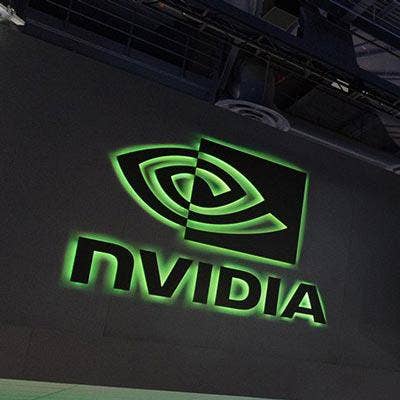Nvidia Q2 Data Center Sales Soar As AI Fuels Demand

Nvidia's graphics processors are increasingly finding a place in the data center at a breakneck pace, as evidenced by the company's second-quarter earnings report.
The Santa Clara, Calif.-based company said data center revenue grew 83 percent year-over-year to $760 million, making it Nvidia's fastest-growing business. To Bob Venero, CEO of Holbrook, N.Y.-based Future Tech, No. 115 on CRN's 2018 Solution Provider 500 and an Nvidia partner, that's not a surprise.
"We're seeing a ridiculous uptick around GPU utilization, whether it's deep learning or high-end graphics," among many other areas, said Venero, who works with Fortune 100 customers. "The GPUs are outpacing the CPU in versatility in delivering content and increasing value from a data center perspective."
[Related: AMD Sees 'Incredible Opportunities' With Next-Gen 7nm Chips]
Venero's comments fall in line with what Nvidia CEO Jensen Huang said drove the company's 43 percent year-over-year growth in overall Q2 revenue: "the widening gap between demand for computing across every industry and the limits reached by traditional computing."
"Developers are jumping on the GPU-accelerated computing model that we pioneered for the boost they need," Huang said in a statement.
Colette Kress, Nvidia's chief financial officer, said in an earnings call the company's strong data center performance was "driven by hyperscale demand as internet services increasingly leverage [artificial intelligence]." AI applications boosting data center revenue include search, recommendation, fraud detection and voice.
Another driver for data center growth was high-performance computing, which Nvidia saw traction in oil and gas, financial services and transportation, among other verticals.
"If you start to look at emerging technologies from a software perspective, it's all GPU intensity," Venero said. "Nvidia is definitely going down the right track."
During the earnings call, Huang named transportation as one vertical that has a lot of potential for future growth for data center. More specifically, he said, it comes down to the large amount of GPU-accelerated computing power that is required for ride-hailing and autonomous vehicles.
"In each of those instances you need high-performance computing to use machine learning to make that perfect match" between riders and drivers for ride-hailing calls, Huang said in the earnings call. He added that every single autonomous vehicle company will need "more GPU-accelerated servers."
Released on Thursday, Nvidia's Q2 earnings came out after the company revealed its next-generation Turing GPU architecture at SIGGRAPH at the beginning of the week. One of Turing's main selling points is built-in support for ray-tracking, a next-generation rendering technique that can produce cinema-quality graphics in real-time. Turing GPUs will also boast Tensor Cores for AI inferencing.
"Turing is a giant leap forward and the greatest advance for computing since we introduced CUDA over a decade ago," Huang said.
Nvidia partners told CRN they expect the company's new Turing GPUs to boost the workstation and gaming markets. Nvidia's first Turing-based products — the Nvidia Quadro RTX 8000, Quadro RTX 6000 and Quadro RTX 5000 GPUs — will start shipping in the fourth quarter for the visualization market. The company is expected to announce a Turing-based GPU for gaming at next week's Gamescom event.
The earnings release also came a day after Intel teased at SIGGRAPH its first dedicated GPU coming out in 2020, development of which is being boosted by multiple hires of former top AMD talent.
Gaming, Nvidia's largest business, was the second-fastest growing unit in Q2, with a 52 percent increase to $1.8 billion from the same period last year. Trailing gaming by growth was professional visualization, which grew 20 percent year-over-year to $281 million. Automotive, which focuses on Nvidia's GPUs for autonomous vehicles, grew 13 percent year-over-year to $161 million. OEM, on the other hand, decreased 54 percent year-over-year to $116 million due to lower cryptocurrency mining demand.
While Nvidia beat Q2 expectations for revenue at $3.1 billion and net earnings of $1.94 per share, or $1.2 billion in net income, they weren't enough to impress Wall Street. The company's stock fell as much as 5 percent in after-hours trading Thursday after Nvidia gave lower guidance for Q3 revenue.